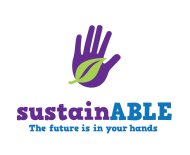DESCRIPTION
In My Community, museum visitors can draw their neighborhoods and talk about what they like best or least about the places they live. They can check out the Changing Communities, and think of ways these spaces could be improved to help people, the planet, and the economy. Then, visitors can imagine how these solutions and others could be applied to their own neighborhoods, and change their drawings to make their neighborhoods better today and in the future.
DESCRIPTION
In My Community, museum visitors can draw their neighborhoods and talk about what they like best or least about the places they live. They can check out the Changing Communities, and think of ways these spaces could be improved to help people, the planet, and the economy. Then, visitors can imagine how these solutions and others could be applied to their own neighborhoods, and change their drawings to make their neighborhoods better today and in the future.
TRAINING VIDEOS
OBJECTIVES
LEARNING GOALS
Sustainable communities meet the needs of people, the planet, and the economy.
We all have a role in creating a more sustainable future.
We can work together to make our communities more sustainable.
Credits
Arizona State University
Sustainability in Science Museums is supported by the Walton Sustainability Solutions Initiatives at Arizona State University.
Creative Commons Attribution Non-Commercial Share Alike 3.0 United States (CC BY-NC-SA 3.0 US).
View more details

NISE Network products are developed through an iterative collaborative process that includes scientific review, peer review, and visitor evaluation in accordance with an inclusive audiences approach. Products are designed to be easily edited and adapted for different audiences under a Creative Commons Attribution Non-Commercial Share Alike license. To learn more, visit our Development Process page.




